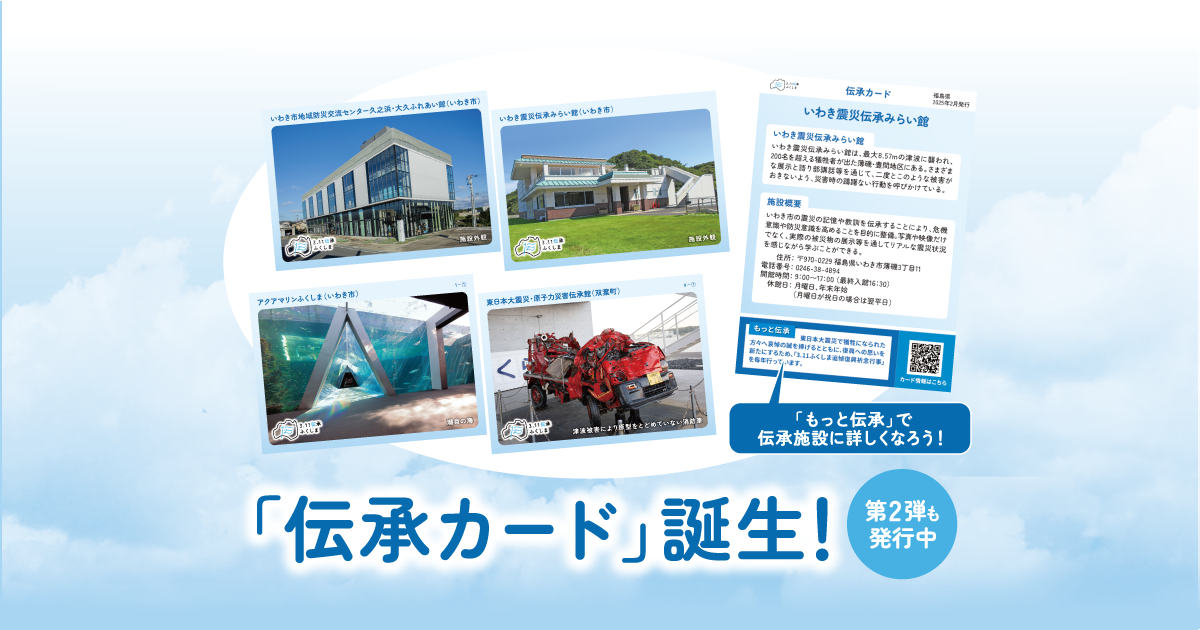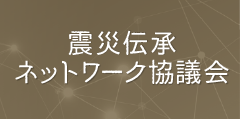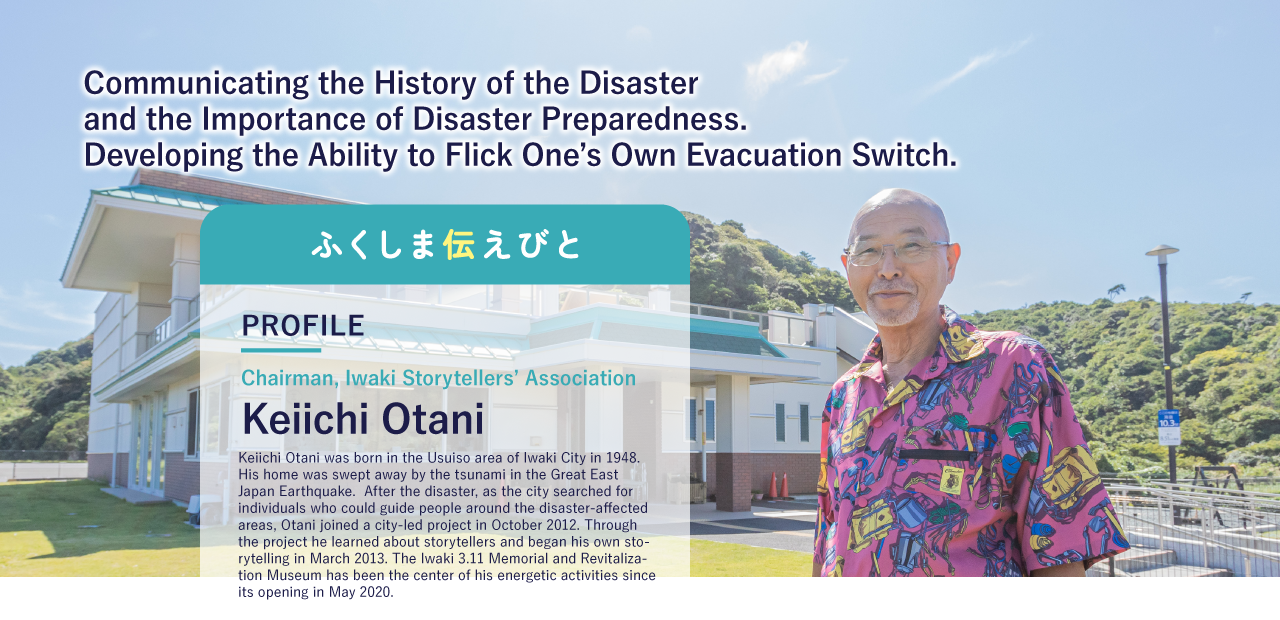
Working from the Iwaki 3.11 Memorial and Revitalization Museum in the Usuiso Area, Which Suffered the Worst Damage in the City.
The Usuiso area at the bottom of the Shioyazaki Lighthouse along Iwaki City’s coast was the area that suffered the greatest damage from the Great East Japan Earthquake. The area was previously home to 344 households and 787 inhabitants, but 301 of these houses were completely destroyed and more than 100 people lost their lives. The Iwaki 3.11 Memorial and Revitalization Museum was opened in May 2020 to revisit Iwaki City’s experiences from the earthquake and to thoroughly communicate these experience to the next generation by ensuring that its memories and learnings do not fade away. The museum is the hub for the Iwaki Storytellers’ Association and its energetic activities. Currently comprising 15 members, in addition to weekly talks every Saturday, the association also caters to requests for talks from large groups of customers. Today, 12 years after the disaster, the museum welcomes many visitors from all over Japan. “The underlying theme of all my stories is ‘protecting your own life.’ In addition to the tragedy of the disaster, more recently I have been paying particular attention to communicating the importance of disaster preparedness,” says Otani.
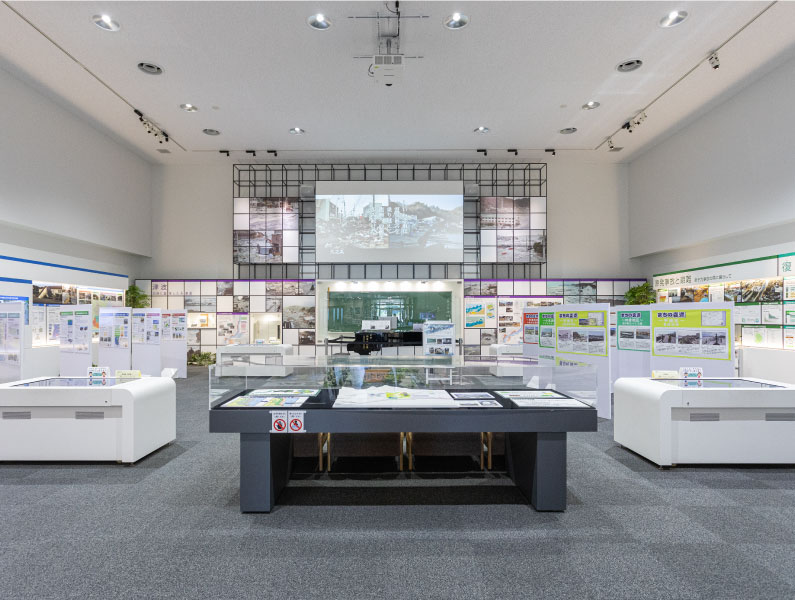
The exhibit space at the Iwaki 3.11 Memorial and Revitalization Museum. Displays cover everything from the damage caused by the earthquake and tsunami to the evacuation and recovery process following the nuclear accident.
The Reason So Many People Lost Their Lives.
The Evacuation Switch That Can Only Be Flicked Ourselves.
As shown by the major flood damage in Iwaki City caused by the Tropical Storm Yun-yeung in September 2023, natural disasters have become increasingly frequent across Japan in recent years. Moreover, there is also an increasing threat of a major earthquake from the Nankai Trough, whose epicenter is located at the boundary between Suruga Bay and the Hyuga-Nada Sea. Amid these threats, however, how many people have checked their local hazard maps, stockpiled food, and taken other preparatory measures? Otani asks, “Why do you think so many people died in the Usuiso area?” After the violent shaking, Otani went to look at the sea. Spread out in front of him was the bottom of the ocean, which was something that should not have been visible. Seeing this bizarre sight made him realize the gravity of the situation, and Otani began preparing for evacuation. However, many of the residents thought they would be fine and that a tsunami would not materialize, and as a result took no action. “The reason so many people died was because so few ran away,” says Otani with deep regret. “Inside us we have an evacuation switch. But we can only flick this switch ourselves.”
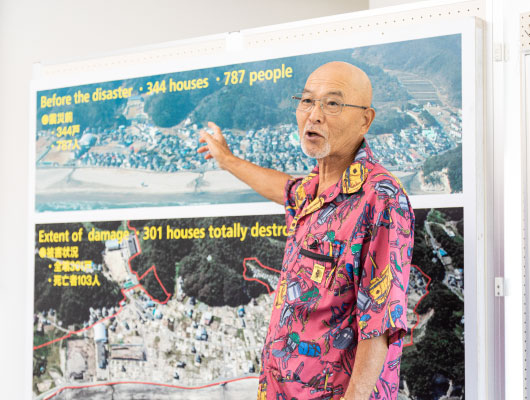
Otani’s first-hand experience of the disaster was so vivid it was almost like experiencing the tense situation of the time ourselves.
The storyteller’s role is to communicate elements of the past that can no longer be seen. The more time passes, the more their work is required.
When ideas were being put in place for the Iwaki 3.11 Memorial and Revitalization Museum, it was merely for an exhibition space with no plans for a storytelling association. It was only after work from Otani and his team that the facility became the hub for storytelling activities that it is today. “When I show visitors a video of a pitch black tsunami, I tell them to think about how there are people inside of it,” says Otani. It is only when you talk about what cannot be seen through the videos that people learn. When giving talks on the beach, Otani asks his audience what they would do if a tsunami came. In doing so he is raising awareness of the importance of regularly imagining a potential situation. The aim is to enable people to flick their own evacuation switch without hesitation. Over time, Otani has switched his focus from communicating the history of the disaster to communicating the importance of being prepared. Constantly working to refine his talks, today he is a certified disaster preparedness specialist. “As storytellers, our words have real weight. This is precisely why we keep learning and keep revisiting the significance of recounting our experiences,” he says. While it may not be possible to prevent disasters, it is possible to save lives. It is this belief that drives Otani’s activities today.
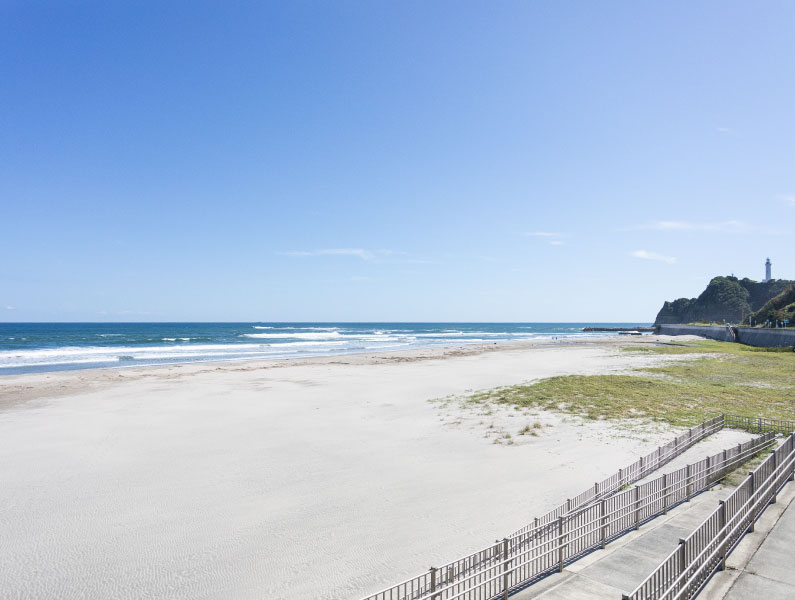
An expansive blue sea and sky spreading out from the Usuiso coast. Realizing that a disaster could occur at any moment is helping to enable people to flick their evacuation switches should the need arise.
Iwaki 3.11 Memorial and Revitalization Museum
〒970-0229
3-11 Usuiso, Iwaki City, Fukushima Prefecture
TEL:0246-38-4894

